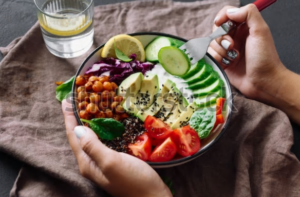Use your brain before it is destroyed by chemical cocktails
In March 2019, the European Food Safety Authority (EFSA) published a note entitled EFSA adopts a specific methodology for assessing chemical mixtures. The new methodological framework will provide EFSA scientists with the tools that will enable them to adopt, where appropriate, a specific approach to address mixtures of chemical contaminants. This approach will complement the current European Union regulatory provisions for the assessment of contaminant mixtures known as contaminant cocktails. Two months ago, EFSA published a report on the cumulative risks of pesticides. The pesticide residues we absorb when we eat fruit and vegetables remain far below individual toxicity thresholds. And yet, several experts believe that synergistic effects cannot be excluded. People are undeniably exposed to a wide variety of contaminants, some of which greatly compound the effect of others!
However, not only pesticide cocktails constitute a threat to public health. The molecules released by packaging and food contact materials could be the predominant sources of contamination of our foodstuffs. About fifteen years ago, Grob et al. [2006] arrived at the frightening conclusion that several tens of thousands of substances migrate into the packaged food in amounts exceeding the threshold of toxicological concern. These high migrant numbers were ultimately confirmed by other scientists [Rather et al. 2017; Geueke et al. 2018].
And according to the Food and Agriculture Organization of the United Nations, we should be worried about another cocktail [Eskola et al. 2019]. Toxic compounds produced by different types of fungi, or mycotoxins, contaminate 25 % and more of the world’s agricultural products. Aflatoxins, deoxynivalenol and zearalenone are well known culprits, but several hundreds of mycotoxins have been discovered in our diet. A mycotoxin contamination is bad enough, but the situation becomes even more disastrous when mycotoxins occur in mixtures containing pesticides [Eze et al. 2018]. Can anybody deny the presence of pesticide traces in our food?
There is no eluding the questions which are so important to so many people. Is it healthy? What impact do these products have on our health? An original study by the national agency for food, environmental and occupational health in France identified the main diets and their inherent contaminant cocktails, with each cocktail containing 11 to 19 contaminants [Traoré et al. 2016 & 2018]. The contaminant classes are heavy metals, mycotoxins, polycyclic aromatic hydrocarbons, pesticides and xenobiotics. A follow-up study evaluated the effects of individual contaminant molecules as well as their characteristic mixtures or cocktails [Kopp et al. 2018]. Obviously, the cocktail effects often exceeded the sum of individual effects. The contaminants reinforced one another. The conclusion that was reached by the researchers is anything but surprising: the effects of contaminants are synergistic.
Are these contaminants truly pathogenic? Is the “machinery” of the body not capable of repelling their attacks? Scientific experts point to the link with the striking increase in lifestyle diseases, such as obesity, type 2 diabetes, infertility, behavioural and cognitive problems, food allergies, and diseases associated with smoking (tobacco smoke is a complex cocktail of chemicals, many of which are endocrine disruptors) and alcohol and drug abuse [Boukris 2014; Trasande 2019]. The increased risk of morbidity results from chemical contaminants in our food; substances with the most obvious health effects are pesticides, flame retardants, fluorinated surfactants or plasticizers and bisphenols. At first, it was thought that these products must persist in the body to cause damage. It is now generally accepted however that even if the body rapidly excretes the contaminants, they leave lasting effects. Often the discernible effect occurs only years later. Worse still, it can even be passed on to the next generation(s). This is called the hit-and-run impact. Our future looks bleak: many chemical substances are harmful and more so even when they are associated with other contaminants.
Protecting ourselves from contaminants is a great challenge and a task that should not be underestimated. Human activities have introduced thousands of tonnes of chemicals into the environment even though it was no secret that humans would behave like absorbent sponges and store the contaminants in their blood. What can we do to remedy this global catastrophe? What can we do to defuse the ticking time bomb that has been inserted into our bodies without our consent? There is no simple answer and no miracle solution. A thorough cleaning – the complete degradation of persistent pollutants, micro- and nanoplastics, and other cocktails – will take much longer than a few weeks or months, and it may even last forever.
It is therefore imperative that we address the major exposure route and guarantee the safety of our food. Governments and agencies for the safety of the food chain must monitor the quality of our foods and beverages; they are responsible for the quality control of products on the market, for necessary chemical and microbiological testings and for risk assessment. This requires permanenty updating techniques. More than ever do we need to pay attention to the metabolic reactions, to the potential toxicity of the whole diet. Molecule-by-molecule analyses to determine the concentrations of target substances and comparing these concentrations to toxicological reference values is therefore of little use. Steps should be taken to develop dedicated mixtures exposure assessment [Kortenkamp 2009; Grob 2017]. The approach that is currently adopted almost everywhere is based on individual substance assessments and does not provide any information on the reaction(s) a substance can cause in the presence of a complex chemical cocktail.
However, emerging techniques, such as bio-analytical methods [Denison et al. 2004; Veyrand et al. 2017], multi-residue analyses [Nannou et al. 2019] and in silico techniques [Van Bossuyt et al. 2017], offer promising prospects. Combining them with molecule-by-molecule analyses will allow us to identify the most dangerous contaminants and determine the harmful effects of the cocktail. For a secure future, we shall need to use a cocktail of techniques to tackle the cocktail of contaminants [Goeyens 2020].
Official bodies naturally have an essential responsibility. Nevertheless, consumers also have an important part to play. Let us now turn away from ultra-processed foods – too sweet or too salty – and increase our consumption of whole grains, fruit and vegetables, nuts and legumes. This will boost our quality of life and help us overcome viral diseases such as COVID 19. Also, the share of hospitalised patients will fall since treacherous viruses will find fewer victims to contaminate, i.e. those already suffering from pre-existing comorbidities caused by poor quality food consumption [vom Saal & Cohen 2020].
Our food is often a stubborn supplier of invisible contaminants. Ensuring food security is a most effective way of dealing with the crisis. Looking the other way would be a huge mistake! Toxins affect our bodies, but worse still, there is now every reason to believe that contaminants also affect the brain [Bellinger 2012; Lam et al. 2017; Gaylord et al. 2020].
Could it really be that we are heading for a future with fewer great minds?
Bellinger[2012]. A strategy for comparing the contributions of environmental chemicals and other risk factors to neurodevelopment of children, Environmental Health Perspectives 120, 4, 501 – 507
Boukris [2014]. Demain, vieux, pauvres et malades! Éditions du Moment, pp. 225
Denison et al. [2004]. Recombinant cell bioassay systems for the detection and relative quantitation of halogenated dioxins and related chemicals, Talanta 63, 5, 1123 – 1133
Eze et al. [2018]. Toxicological effects of regulated mycotoxins and persistent organochloride pesticides: In vitro cytotoxic assessment of single and defined mixtures on MA-10 murine Leydig cell line, Toxicology In Vitro 48, 93 – 103
Gaylord et al. [2020]. Trends in neurodevelopmental disability burden due to early life chemical exposure in the USA from 2001 to 2016: A population-based disease burden and cost analysis, Molecular and Cellular Endocrinology 502, 110666
Geueke et al. [2018]. Food packaging in the circular economy: Overview of chemical safety aspects for commonly used materials, Journal of Cleaner Production 193, 491 – 505
Goeyens [2020]. Keeping Cocktail Effects Under Control is the Number One Challenge for the 21st Century, EC Nutrition 15, 2, pp. 3
Grob et al. [2006]. Food contamination with organic materials in perspective: packaging materials as the largest and least controlled source? A view focusing on the European situation, Critical reviews in food science and nutrition 46, 7, 529 – 535
Grob [2017]. The European system for the control of the safety of foodcontact materials needs restructuring: a review and outlook for discussion, Food Additives & Contaminants: Part A, 34, 9, 1643 – 1659
Kopp. et al. [2018]. Genotoxicity and mutagenicity assessment of food contaminant mixtures present in the French diet, Environmental and Molecular Mutagenesis 59, 8, 742 – 754
Kortenkamp [2009]. Ten years of mixing cocktails: a review of combination effects of endocrine-disrupting chemicals, Environmental health perspectives 115, Suppl 1, 98 – 105
Lam et al. [2017]. Developmental PBDE exposure and IQ/ADHD in childhood: a systematic review and meta-analysis, Environmental health perspectives 125, 8, 086001, pp. 20
Nannou et al. [2019]. Analytical strategies for the determination of antiviral drugs in the aquatic environment, Trends in Environmental Analytical Chemistry, e00071
Rather et al. [2017]. The sources of chemical contaminants in food and their health implications, Frontiers in pharmacology 8, 830, pp. 8
Traoré et al. [2016]. To which chemical mixtures is the French population exposed? Mixture identification from the second French Total Diet Study, Food and Chemical Toxicology 98, 179 – 188
Traoré et al. [2018]. To which mixtures are French pregnant women mainly exposed? A combination of the second French total diet study with the EDEN and ELFE cohort studies, Food and Chemical Toxicology 111, 310 – 328
Trasande [2019]. Sicker, Fatter, Poorer: The Urgent Threat of Hormone-Disrupting Chemicals to Our Health and Future . . . and What We Can Do About It, Houghton Mifflin Harcourt, pp. 221
Veyrand et al. [2017]. Integrating bioassays and analytical chemistry as an improved approach to support safety assessment of food contact materials, Food Additives & Contaminants: Part A 31, 10, 1807 – 1816
Van Bossuyt et al. [2017]. Safeguarding human health using in silico tools, Archives of Toxicology 91, 2705 – 2706
vom Saal & Cohen [2020]. How toxic chemicals contribute to COVID-19 deaths, Environmental Health News, April 17, https://www.ehn.org/toxic-chemicals-coronavirus-2645713170.html

